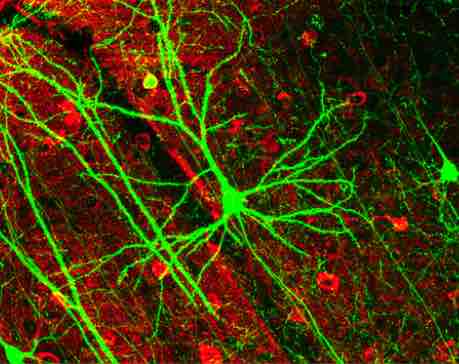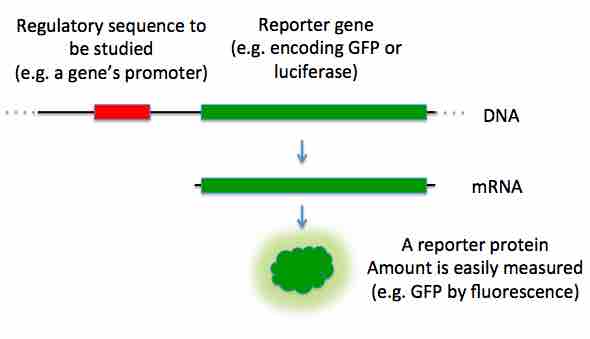Fluorescence and luminescence
Cells undergo many dynamic processes. In order to visualize these processes we need to be able to film cells over time. This can be achieved by using tools to monitor gene expression to track when proteins are made and where they go in the cell. In molecular biology, researchers use a reporter gene that they attach to a regulatory gene of interest. Reporter genes ideally have distinguishable properties that can be easily detected and measured. The most commonly used reporter genes have biofluorescent or bioluminescent characteristics and can be visualized with the aid of microscopy and other non-invasive imaging equipments. Examples of such reporters are the genes encoding for Green Fluorescent Protein (GFP) and luciferase, respectively. The discovery of GFP changed the way we look at cellular life today. GFP was first isolated from the jellyfish (Aequorea victoria) by the Japanese scientist Osuma Shimomura in the early 1960s. It was then cloned and its sequence identified in 1992 by Douglas Prasher. GFP is widely used in research laboratories as a marking tool to illuminate and track genes in fixed or living cells. Luciferase, isolated from fireflies, is an enzyme present in the cells of bioluminescent organisms that catalyzes the oxidation of luciferin and ATP producing light. Luciferase is similarly useful as a biological marker in living cells and organisms.
Transfection of reporter genes into cells
To introduce a reporter gene into an organism, scientists place the reporter gene and the gene of interest in the same DNA construct to be inserted into the cell or organism. For bacteria or prokaryotic cells in culture, this is usually in the form of a circular DNA molecule called a plasmid . It is important to use a reporter gene that is not natively expressed in the cell or organism under study, since the expression of the reporter is being used as a marker for successful uptake of the gene of interest. This gene's regulatory sequence now controls the production of GFP or luciferase, in addition to the protein of interest. In cells where the gene is expressed, and the tagged proteins are produced, GFP or luciferase are produced at the same time. Thus, only those cells in which the tagged gene is expressed, or the target proteins are produced, will fluoresce when observed under fluorescence microscopy , or bioluminesce (emit light) when luciferin, the substrate for luciferase is added.

Newly developed neurons in the hippocampus of the adult mouse
Pyramidal neuron visualized by green fluorescent protein (GFP).

Introducing a reporter gene into a cell
Reporter gene used as an indication of the regulatory sequence expression in the cell.
Application of GFP in molecular microbiology
GFP has many advantages over conventional reporter genes in that it is highly stable, non-toxic to living cells and organisms, detection tools are non-invasive and the green light is generated without the addition of external cofactors and measured without application of expensive equipment. Various applications of that reporter gene were documented and vary from being able to monitor microorganism's survival in complex biological systems such as activated sludge to biodegradation of chemical compounds in soil. GFP allowed the detection, determination of spatial location and enumeration of bacterial cells from diverse environmental samples such as biofilm and water. GFP as biomarker is also useful in monitoring gene expression and protein localisation in bacterial cells.